Henschel Hs129 - Airfix 1/72
Discussion
I know we shouldn't do it but I'm always starting other projects before previous ones are completed. My Halifax is slightly on hold at the moment as I need a few free days to work on it and I haven't been able to get the time due to work and travel commitments.
Therefore, I decided I'd satisfy my model building itch with a slightly less ambitious project - one I can work on in front of the TV or take with me on my travels.
The kit chosen is a 1970s boxing of the old (1968) Airfix Henschel Hs129 which I picked up at a model show not too long ago for about £5. I first built one of these when I was a kid - probably around 1970. I was no doubt drawn to the kit by the great Roy Cross artwork - and that big gun! On this occasion I think I'll do the "sans gun" version as it has nice yellow "theatre" bands and panels which brightens up the colour scheme.
artwork - and that big gun! On this occasion I think I'll do the "sans gun" version as it has nice yellow "theatre" bands and panels which brightens up the colour scheme.
The pictures below show the basic packaging, instructions and components. There is no cockpit detail at all, apart from the (rather basic) seat. However, the cockpit canopy on the 129 was almost just a slit so there is virtually nothing to see through the windscreen and side panels.
The 129 was a rather strange little aeroplane. it is actually very small but was fitted with two engines. It was conceived primarilly as an anti-tank aeroplane and the fuselage was designed with protection from ground fire as a priority - a concept later adopted for the Fairchild A-10 Thunderbolt. It was fitted with extensive armour plating and the pilot sat in a very cramped armoured tub. Even the fuselage sides were sloped to help deflect machine gun bullet strikes.
It proved very effective in its intended role on the Eastern Front and was also used in North Africa. However, they were never built in great numbers so had little overall effect on the outcome of the war.
The original versions were fitted with Argus in-line liquid cooled engines but the production variants were fitted with French built Gnome-Le Rhone air cooled radials. Germany tried to make as much use of the industries based in occupied countries as they could.

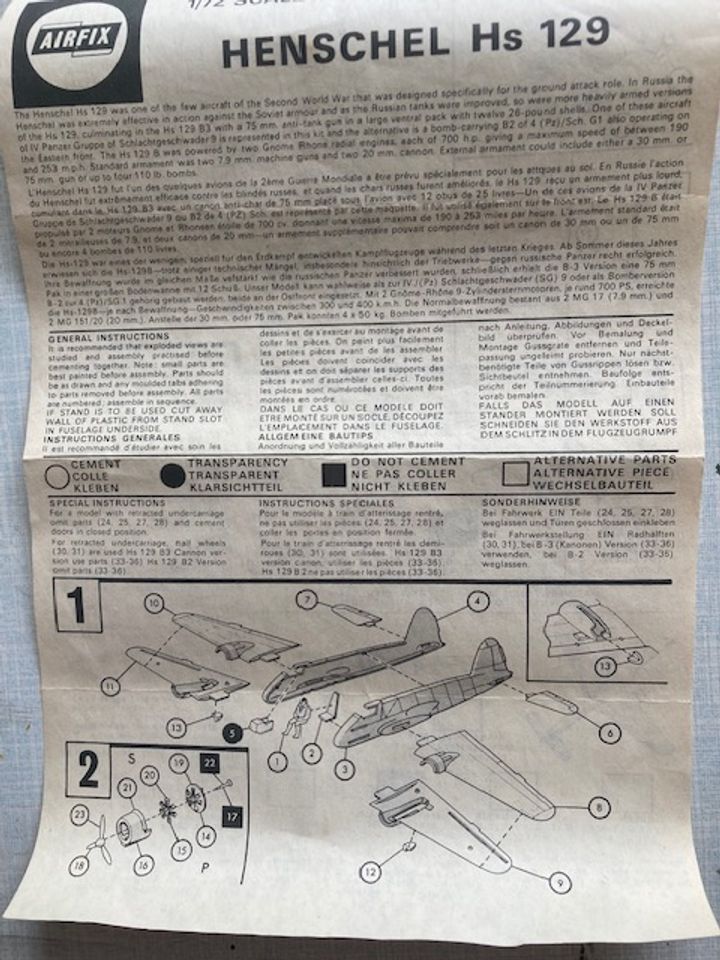
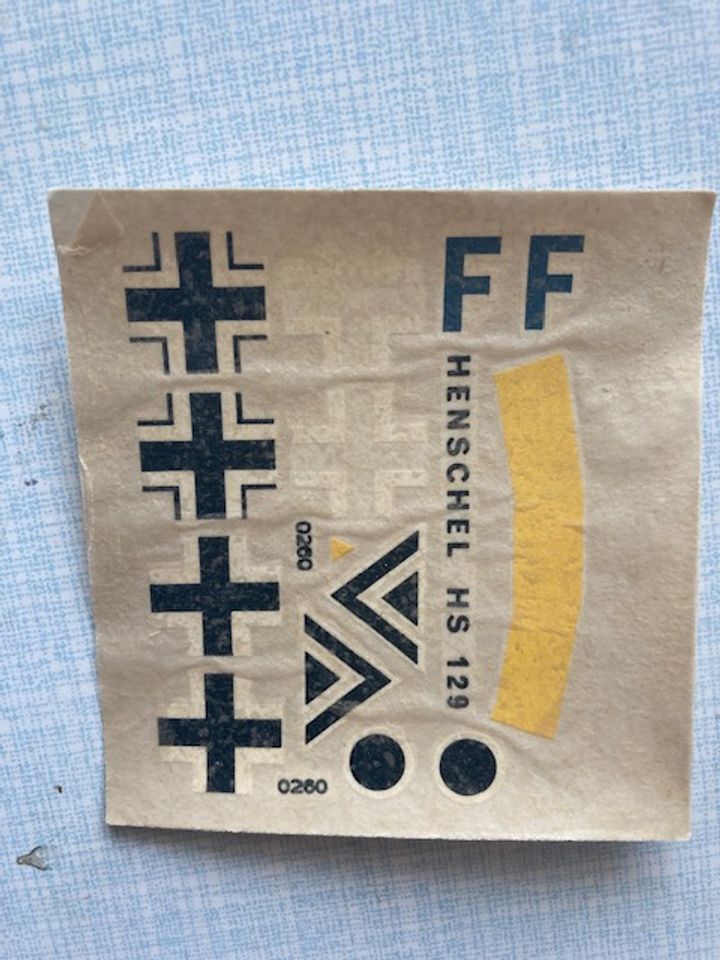
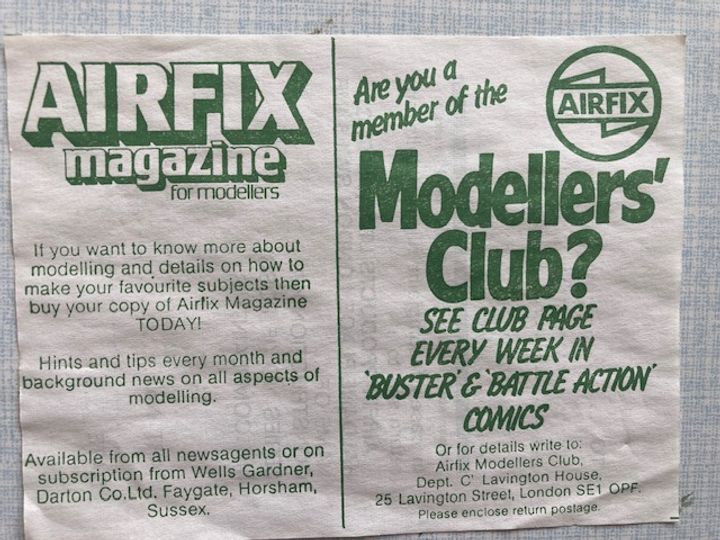

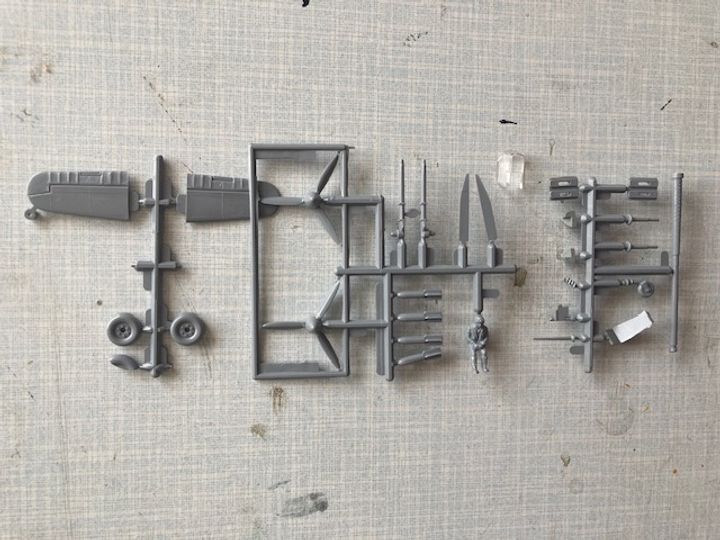
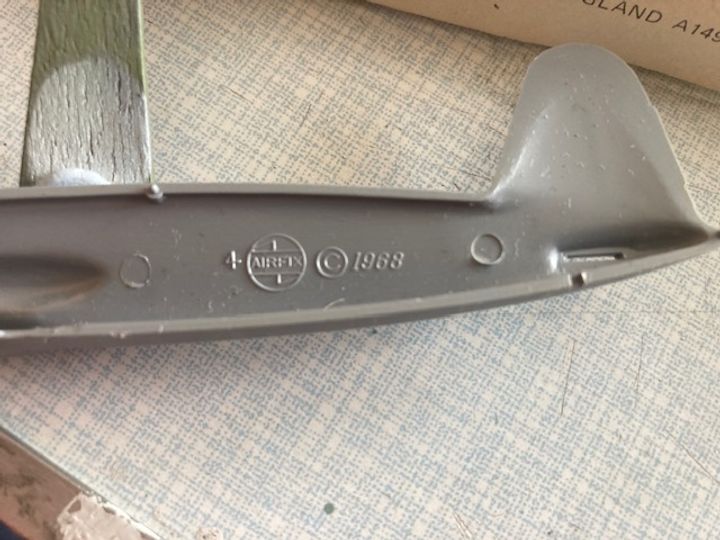
Therefore, I decided I'd satisfy my model building itch with a slightly less ambitious project - one I can work on in front of the TV or take with me on my travels.
The kit chosen is a 1970s boxing of the old (1968) Airfix Henschel Hs129 which I picked up at a model show not too long ago for about £5. I first built one of these when I was a kid - probably around 1970. I was no doubt drawn to the kit by the great Roy Cross
 artwork - and that big gun! On this occasion I think I'll do the "sans gun" version as it has nice yellow "theatre" bands and panels which brightens up the colour scheme.
artwork - and that big gun! On this occasion I think I'll do the "sans gun" version as it has nice yellow "theatre" bands and panels which brightens up the colour scheme.The pictures below show the basic packaging, instructions and components. There is no cockpit detail at all, apart from the (rather basic) seat. However, the cockpit canopy on the 129 was almost just a slit so there is virtually nothing to see through the windscreen and side panels.
The 129 was a rather strange little aeroplane. it is actually very small but was fitted with two engines. It was conceived primarilly as an anti-tank aeroplane and the fuselage was designed with protection from ground fire as a priority - a concept later adopted for the Fairchild A-10 Thunderbolt. It was fitted with extensive armour plating and the pilot sat in a very cramped armoured tub. Even the fuselage sides were sloped to help deflect machine gun bullet strikes.
It proved very effective in its intended role on the Eastern Front and was also used in North Africa. However, they were never built in great numbers so had little overall effect on the outcome of the war.
The original versions were fitted with Argus in-line liquid cooled engines but the production variants were fitted with French built Gnome-Le Rhone air cooled radials. Germany tried to make as much use of the industries based in occupied countries as they could.
Making good progress so far.
Went together quite well with minimal filler needed. The mould is from 1968 and I think this issue dates from the mid 1970s so the parts were still fairly new at the time and are crisply moulded with no real flash to speak of. This is in contrast to the Hampden I built not too long ago. The moulds for Airfix's Hampden are also from 1968 but the contrast could not have been more stark. The Hampden I built was from a 2010 issue and the moulds were very worn with poor fit and lots of gaps and flash. The moral of the story is that when building older Airfix kits, try and get hold of a version of the kit from when it was still relatively new.
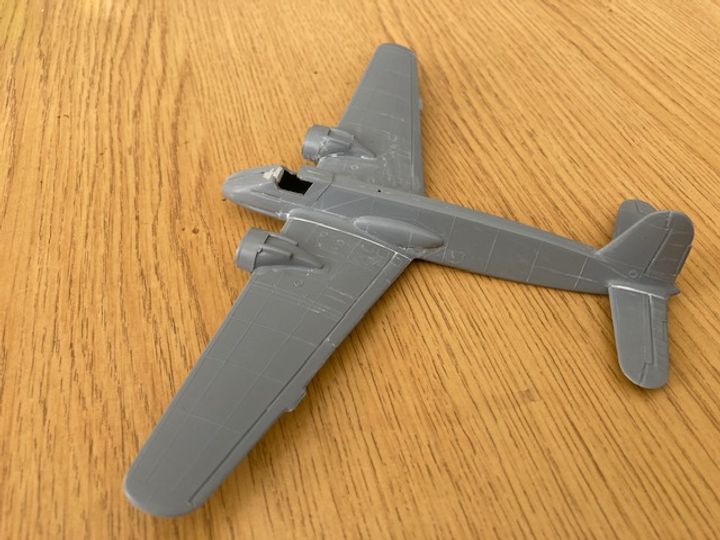
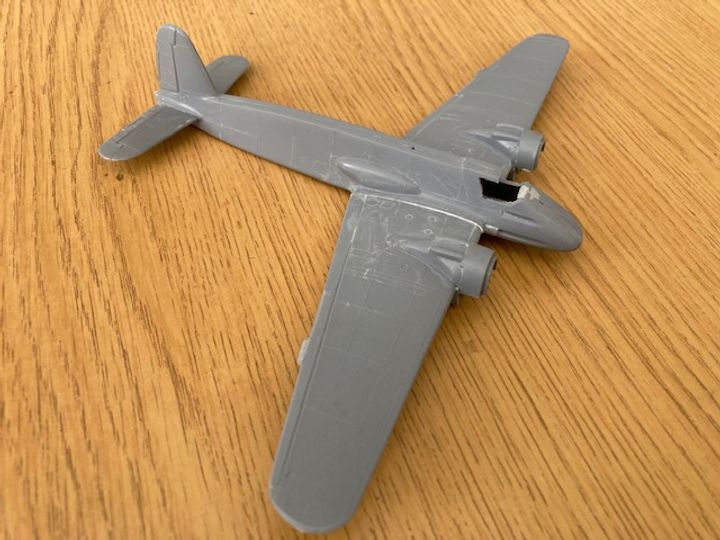
I drilled out the exhausts which were moulded as rather solid lumps.
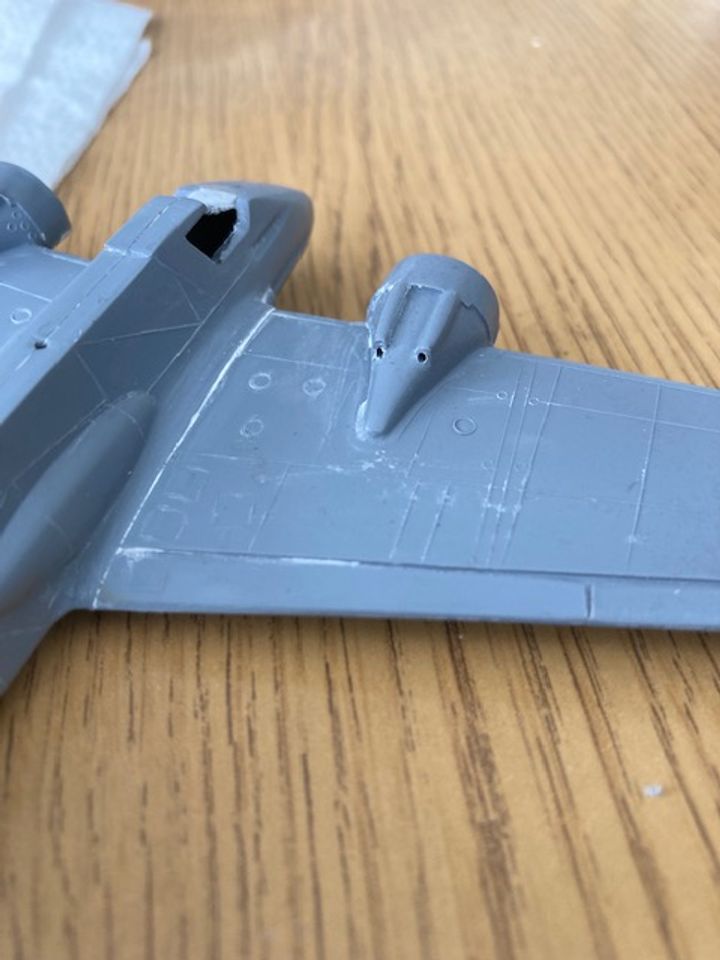
Went together quite well with minimal filler needed. The mould is from 1968 and I think this issue dates from the mid 1970s so the parts were still fairly new at the time and are crisply moulded with no real flash to speak of. This is in contrast to the Hampden I built not too long ago. The moulds for Airfix's Hampden are also from 1968 but the contrast could not have been more stark. The Hampden I built was from a 2010 issue and the moulds were very worn with poor fit and lots of gaps and flash. The moral of the story is that when building older Airfix kits, try and get hold of a version of the kit from when it was still relatively new.
I drilled out the exhausts which were moulded as rather solid lumps.
Looking good- they really didn't mess around with the instructions in those days!
Very interesting subject though.
I think the oldest model I have built is an old Academy boxed SR-71 that my late dad acquired in the mid 80s, I genuinely thought a chunk of the instruction booklet was missing when I first opened it up!
Very interesting subject though.
I think the oldest model I have built is an old Academy boxed SR-71 that my late dad acquired in the mid 80s, I genuinely thought a chunk of the instruction booklet was missing when I first opened it up!
Airfix's original instructions had a lot of English language verbal explanation in them - so the lack of pictorial detail shown in the instructions was somewhat ameliorated.
However, in the early 70s (I think) they switched to a non-verbal approach (as had virtually all of the kit manufacturers by then) as it was multi-lingual. The original 1968 issue of this kit had the verbal style instructions enclosed. Ironically, I found this image on a French language model forum
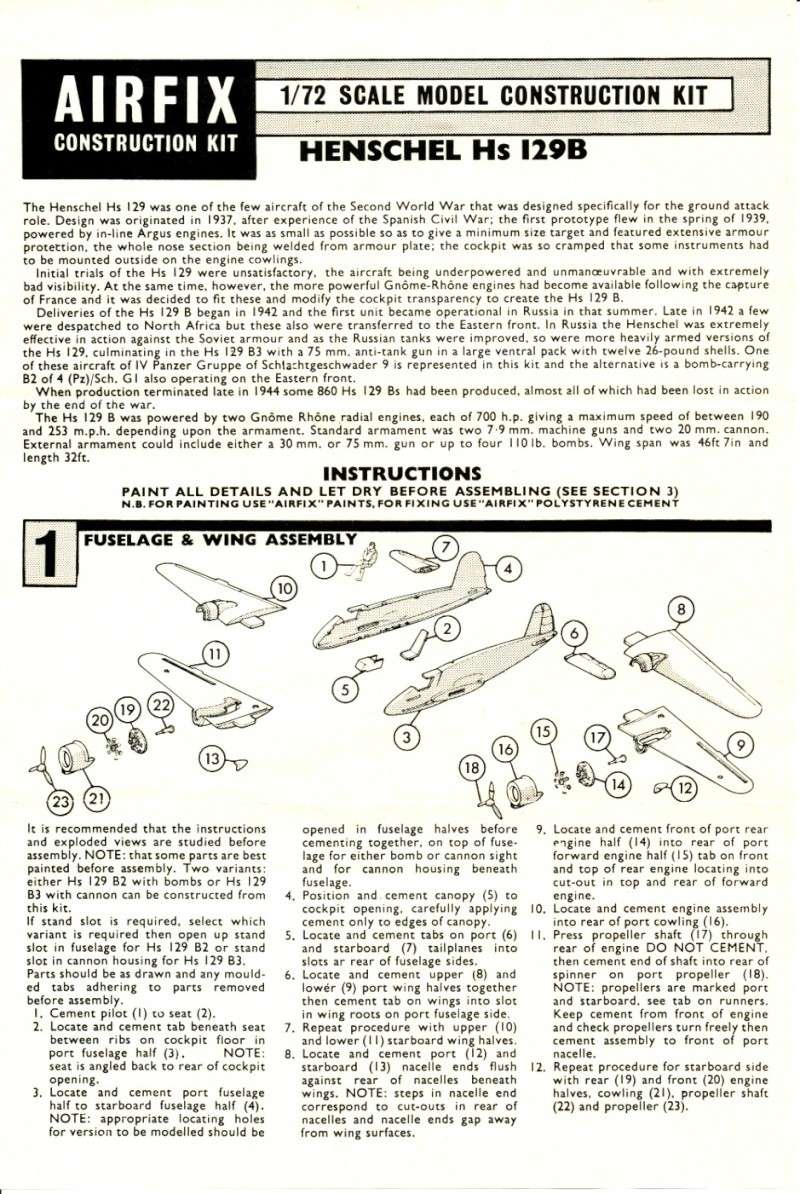
However, in the early 70s (I think) they switched to a non-verbal approach (as had virtually all of the kit manufacturers by then) as it was multi-lingual. The original 1968 issue of this kit had the verbal style instructions enclosed. Ironically, I found this image on a French language model forum


Eric Mc said:
Airfix's original instructions had a lot of English language verbal explanation in them - so the lack of pictorial detail shown in the instructions was somewhat ameliorated.
However, in the early 70s (I think) they switched to a non-verbal approach (as had virtually all of the kit manufacturers by then) as it was multi-lingual. The original 1968 issue of this kit had the verbal style instructions enclosed. Ironically, I found this image on a French language model forum

It would have been around 1973 I think, alongside the switch over to 'Type 4' packaging. However, in the early 70s (I think) they switched to a non-verbal approach (as had virtually all of the kit manufacturers by then) as it was multi-lingual. The original 1968 issue of this kit had the verbal style instructions enclosed. Ironically, I found this image on a French language model forum


Simpo Two said:
Dogfight Doubles!
I had the Bristol Fighter (which my grandfather flew in) and Fokker Triplane, and one with a Mig-15 (which research shows went with a Mirage, but it really should have been a Sabre).
Back then Airfix didn't have a Sabre in their range. The Dogfight Doubles made use of what they already had. As far as I know they never commissioned any kits specifically for the Dogfight Doubles. I had the Bristol Fighter (which my grandfather flew in) and Fokker Triplane, and one with a Mig-15 (which research shows went with a Mirage, but it really should have been a Sabre).
Another rather unlikely combo was the MiG 21 v' the Cessna O-2A although it might have been theoretically possible in Vietnam.
The Bristol Fighter and Fokker Dr1 combo has been reissued recently as part of the vintage classic range.
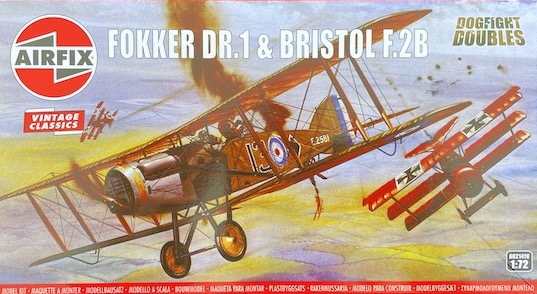
Gassing Station | Scale Models | Top of Page | What's New | My Stuff




